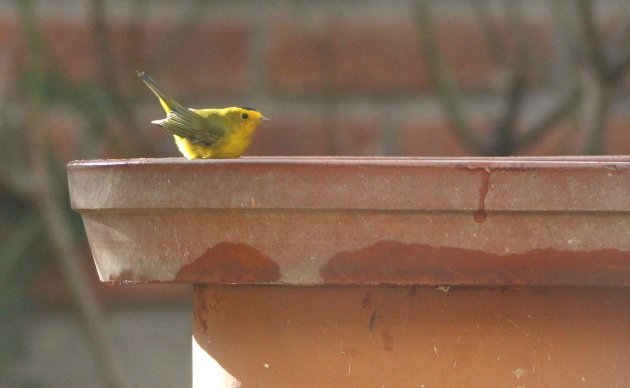
When you are an American expatriate who lives, and birds, in Mexico, it is a topsy-turvy world. Just as your conationals up north are rejoicing over the return of hundreds of migratory species, you sadly say goodbye to the same. The migratory warblers, which unfortunately never warble in their winter range, take their “cheep” calls up north. (Mexicans call them “chipes”, pronounced CHEEP-ace, for this very reason.)
I am on a chat for Mexican birders, and one of their latest running jokes has to do with a Clay-colored Thrush (all too common on Mexico’s eastern coast) which, during our quarantine, has been dubbed “Wilson” by one of our Veracruz birders, in a reference to Tom Hanks’ volleyball “friend” in Castaway. But my “Wilsons” really were Wilsons: Wilson’s Warblers, to be exact. One or or two of these cute birds visited me every day throughout the winter. But alas, my garden Wilsons have not been seen here on the 4th of April.
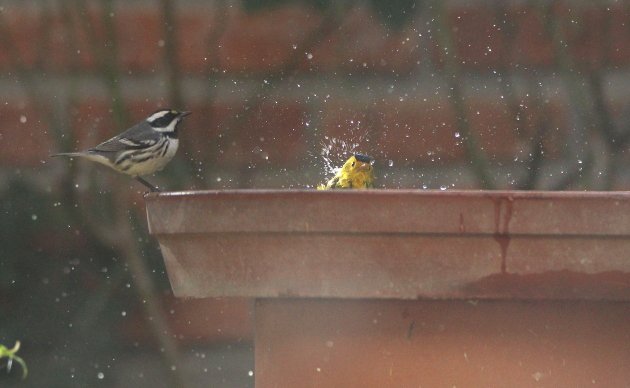 Here is Wilson and his Black-throated Gray friend having a bath. Good-bye to you both!
Here is Wilson and his Black-throated Gray friend having a bath. Good-bye to you both!
The same can be said for my garden’s Black-throated Gray Warbler (last seen on February 24th), Orange-crowned Warblers (March 19th), Yellow-rumped Warbler (March 27th), and Nashville Warblers (April 7th). Although, oddly enough, my garden is currently hosting a MacGillivray’s Warbler on its way north. That is a garden first!
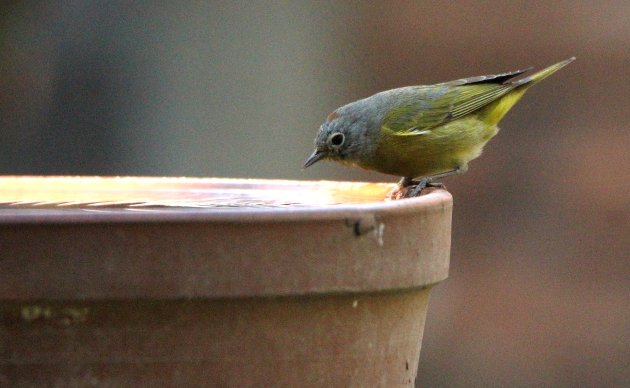 And here is a Nashville Warbler. Or, as my Mexican friends jokingly call him, a “Nacho Villa”.
And here is a Nashville Warbler. Or, as my Mexican friends jokingly call him, a “Nacho Villa”.
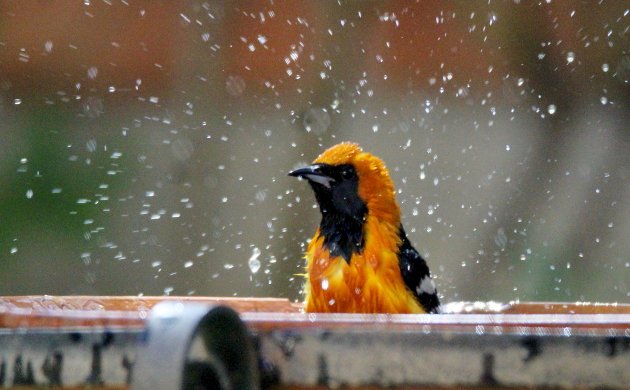
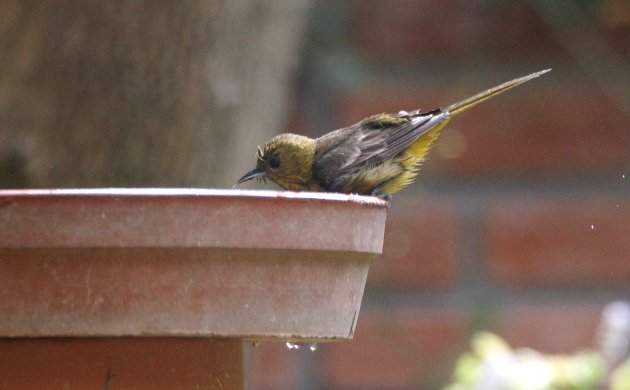
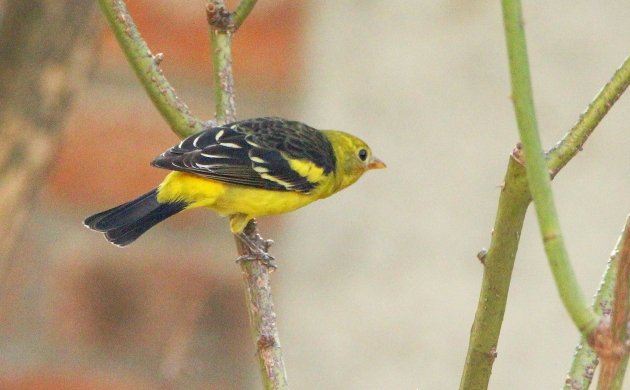 The Hooded Orioles and Western Tanagers have also headed north.
The Hooded Orioles and Western Tanagers have also headed north.
I have still seen each of these species out in the forest between two days and three weeks after they abandoned my yard. And, until recently, those forests also hosted Townsend’s, Hermit, Black-and-White, Virginia’s, and even a Colima Warbler or two each year. A good winter will also include an Ovenbird, and at least one Louisiana Waterthrush. But I am sure I have seen my last examples of these species until the fall; especially since a total lockdown was just decreed for my state of Michoacán. My forest, lake, and tropical scrub sites will have to live without me for a few weeks.
Fortunately, my own garden is currently being visited by a nice collection of resident species. April and May are our hottest and driest months here, so my birdbath has become a mandatory watering hole for Blue Mockingbirds, Black-vented Orioles, Canyon Towhees, a Bronzed Cowbird, Curve-billed Thrasher, Varied Bunting, Blue Grosbeak, and this year’s surprise, a Rufous-backed Robin that is singing every day around our neighborhood. I’m looking forward to visits from Spotted Wrens and Groove-billed Anis soon. A pair of Warbling Vireos are regular client right now, and we have also had visits from Black-headed Grosbeaks and a Northern Beardless Tyrannulet this year.
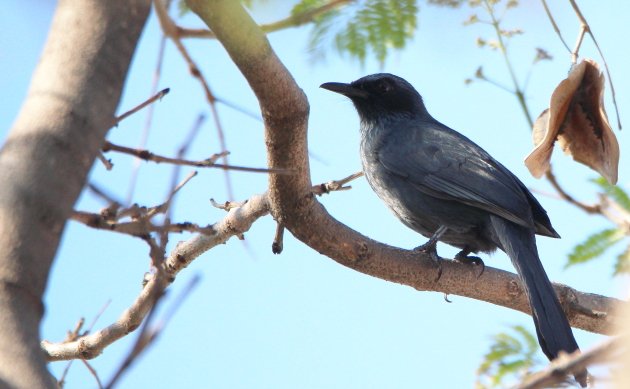 Blue Mockingbirds can be seen every day on my Jacaranda tree during the spring.
Blue Mockingbirds can be seen every day on my Jacaranda tree during the spring.
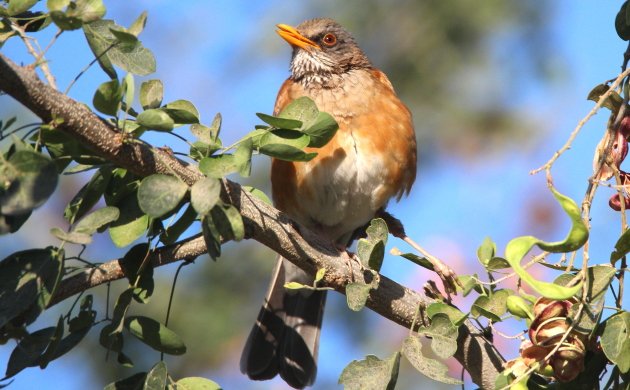 A Rufous-backed Robin is also arriving every day right now. Although this photo is from a nearby state.
A Rufous-backed Robin is also arriving every day right now. Although this photo is from a nearby state.
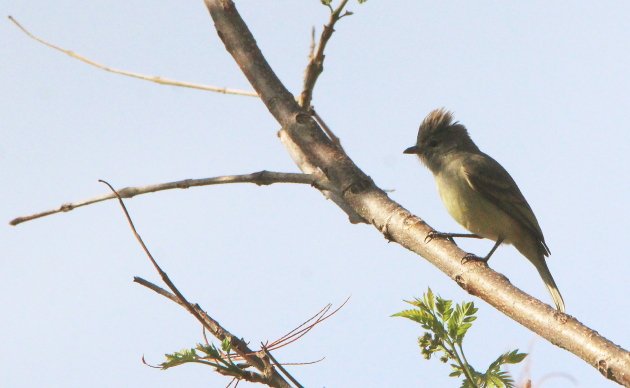 But this Tyrannulet was a one-time thrill. Same Jacaranda tree, earlier in the season.
But this Tyrannulet was a one-time thrill. Same Jacaranda tree, earlier in the season.
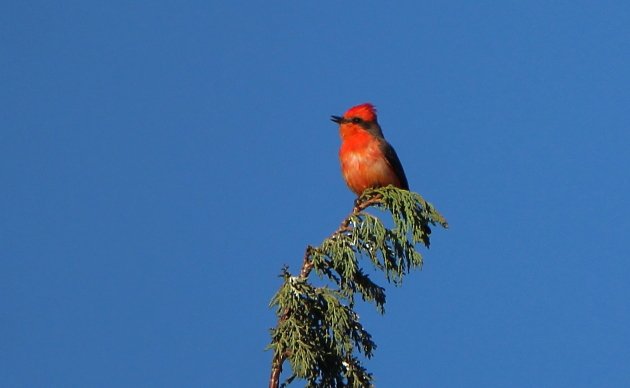
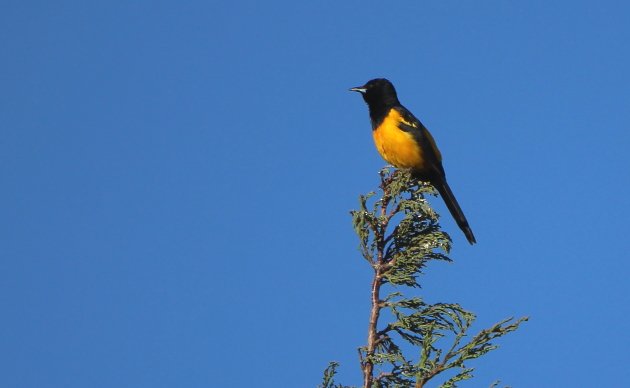 And yes, Corey, it is nothing special to see a Vermilion Flycatcher here… or a Black-vented Oriole, on the same neighbor’s tree.
And yes, Corey, it is nothing special to see a Vermilion Flycatcher here… or a Black-vented Oriole, on the same neighbor’s tree.
Our neighborhood, which just became my whole world for a while, will be poorer until next fall. But then, you folks up north have been having a much rougher time of it than we have, at least up until now. So go ahead and take your summer breeders back.
They will return to me soon enough.











I love “chipes” for warblers… so much more accurate!
Hello, Paul;
Your Wilson’s and Black-throated Gray Warblers showed up in my Portland, Oregon yard 3 days ago! Thanks for sending them up!
Hi France:
I live to serve!
Although I saw a Western Tanager and a Virginia’s Warbler from the roof of my house today. I guess some migratories are still hanging around.